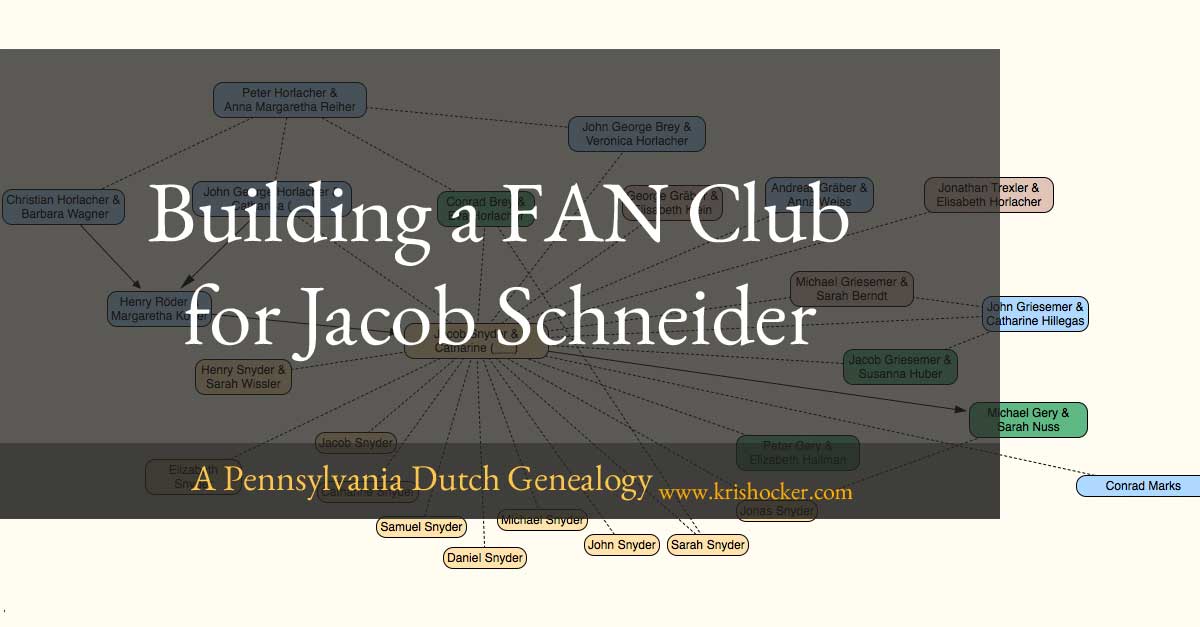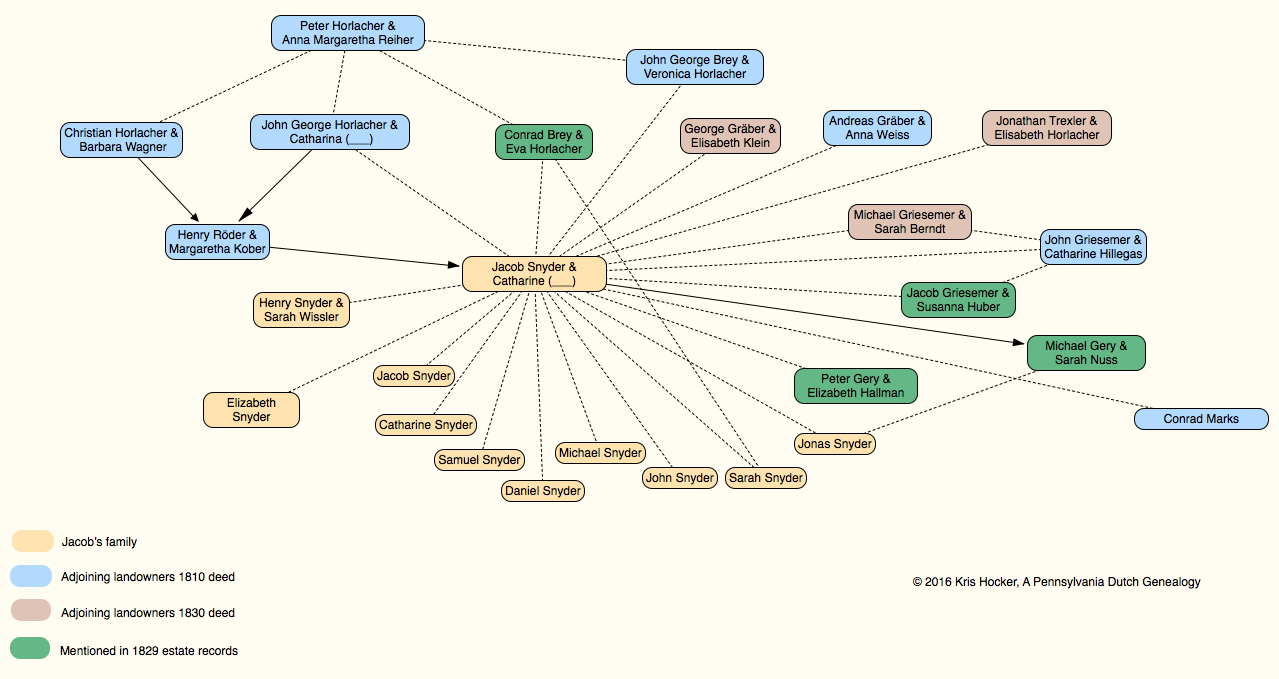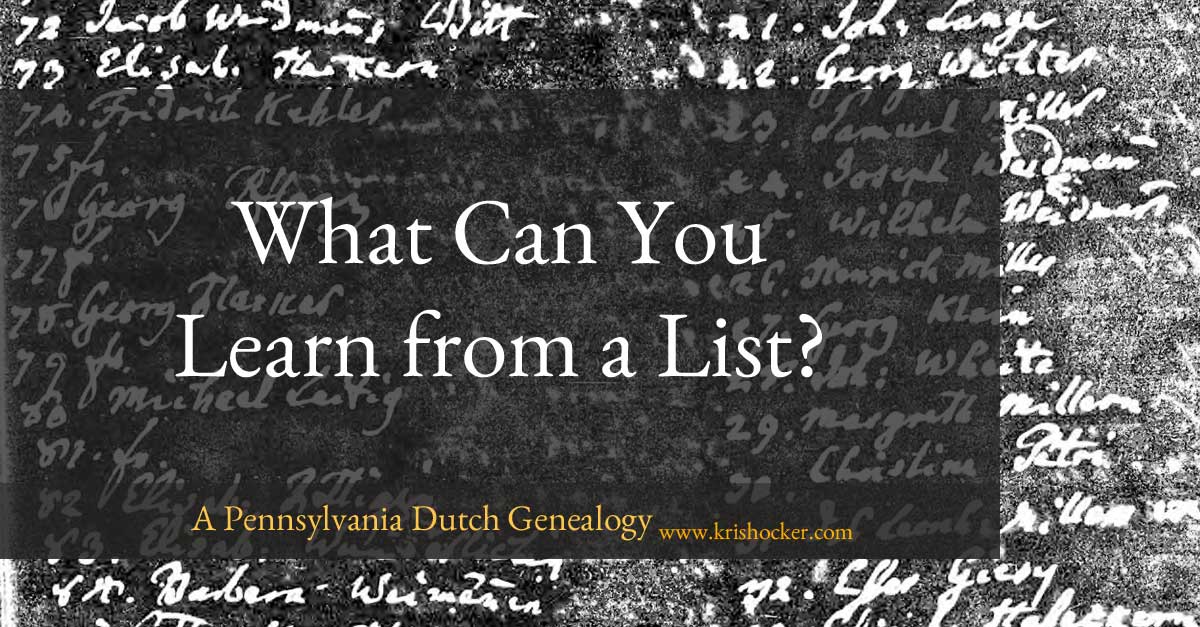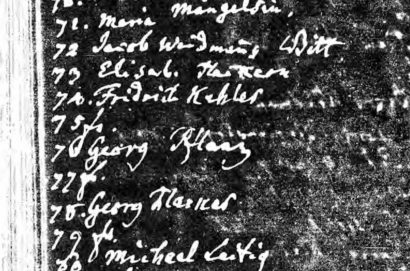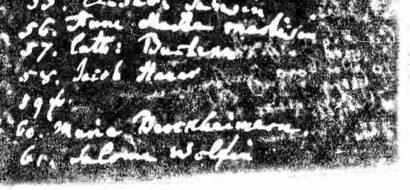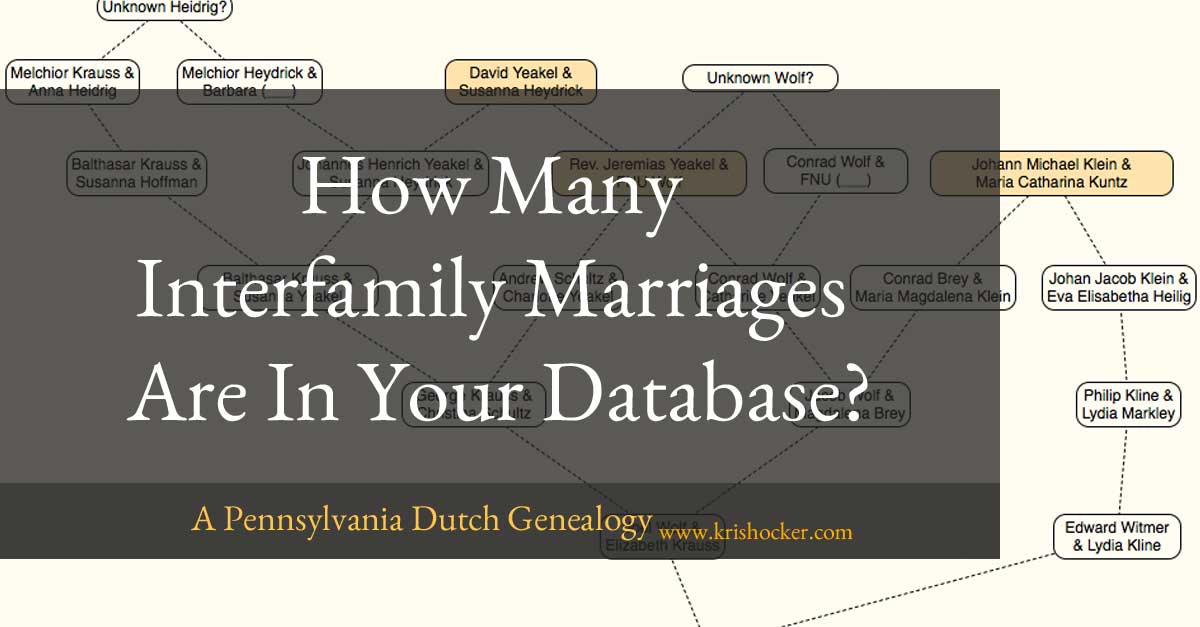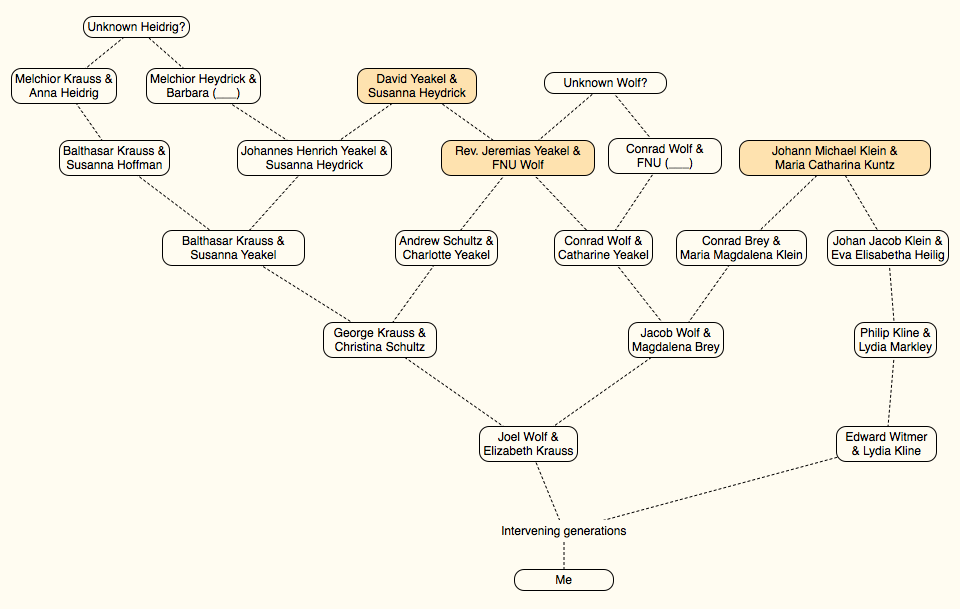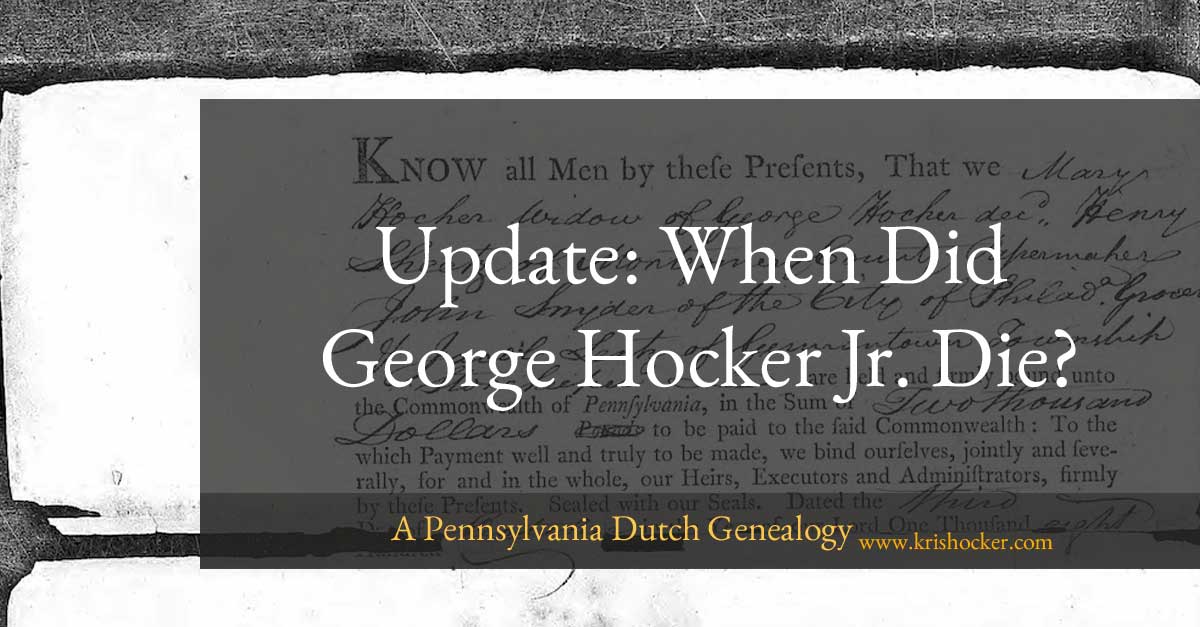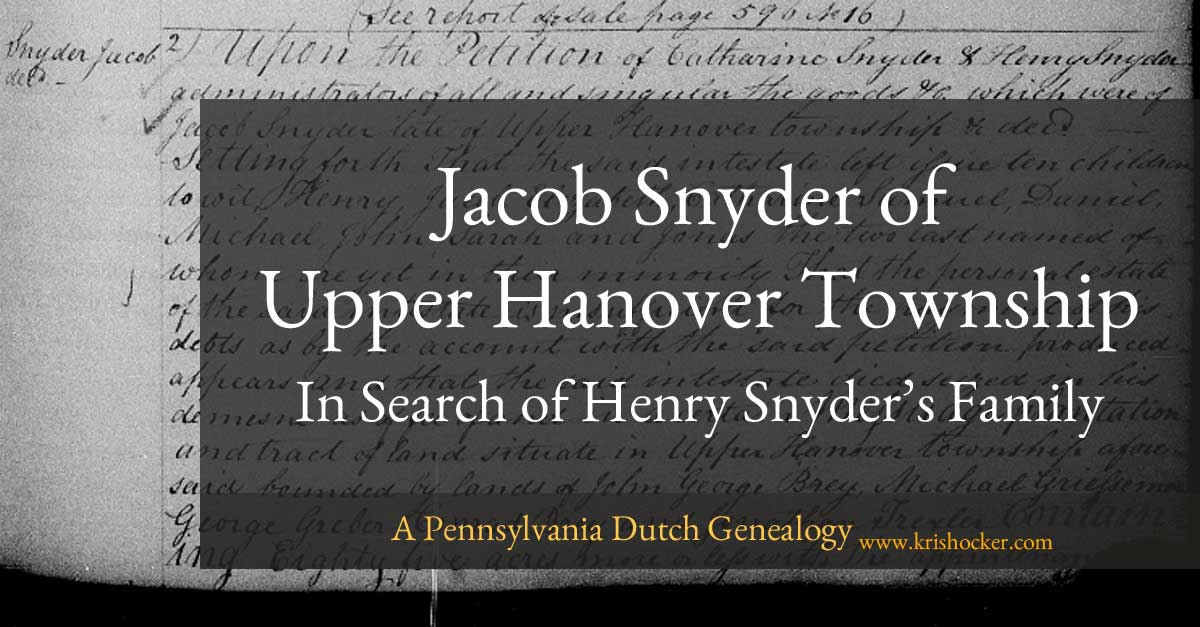Building a FAN Club for Jacob Schneider
On 21 November 1829, Henry Snyder and Catharine Snyder, administrators of Jacob Snyder’s estate, sold his 85 acres in Upper Hanover Township, Montgomery County to Michael Gery of Hereford Township, Berks County.1 This land adjoined that of John George Brey, Michael Griesemer, George Greber, Conrad Brey and Jonathan Trexler.2
Jacob Snyder purchased this land from Henry Roeder in two tracts—one of 80 acres and one of 5 acres—on 2 April 1810.3 At that time, the 80 acre tract adjoined land of Andrew Graber, John George Brey, John Greaser [Griesemer?], John George Horlacher, Conrad Marks, and Peter Horlacher. It was originally sold to Roeder by Christian and Barbara Horlacher. The five acre-tract bordered land of Henry Roeder and John George Horlacher, and was part of a tract that Peter and Anna Mary Horlacher sold to John George Horlacher in 1801. George and Catharine Horlacher sold five acres from that tract to Henry Roeder in 1809.

Jacob Snyder 1820 Upper Hanover neighbors
If we examine the 1820 census enumeration for Jacob Snyder, we can see some of these names surrounding Jacob in the list.4 George Brey, enumerated as Pry, is next on the list after Jacob. Andrew Graber, enumerated as Graver, is two down from George. George Horlacher is on the previous page, enumerated seven households before Jacob. And just before George Horlacher is Adam Snyder and Conrad Brey. “Frederick Cresimer” and “Jacob Cresimer” (aka Griesemer) are also listed between George Horlacher and Jacob Snyder.
Some of these surnames should sound familiar from my previous posts. Griesemer and Brey were associated with Jacob’s estate. Jacob Griesemer was surety on the administration5 and Conrad Brey was guardian to the minor child Sarah Snyder, Jacob’s youngest daughter.6 I believe these men and the Gerys will be important to understanding Jacob and Catharine’s family.
Conrad Brey was married to Eva Horlacher, daughter of Peter Horlacher.7 After Peter’s death in 1816, Conrad purchased 61 acres in Upper Hanover from the estate, making him Jacob’s neighbor.8 Eva’s sister Veronica was also married to a Brey. She was married to George Brey, quite possibly the John George Brey who owned land that adjoined Jacob’s.9
After Jacob’s death, Catharine is enumerated near some of these same names. George A. Brey is two lines above her, Martin Brey two lines and Conrad Brey five lines after her.10 John Harlocher is four lines after her. Frederick Greisemer is six lines, Jacob Greisemer four lines and Michael Greisemer three lines above her.
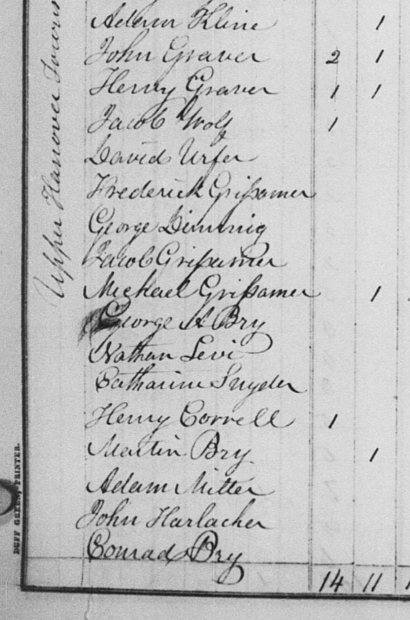
1830 Catharine Snyder enumeration
Researching Eva and Veronica’s father Peter Horlacher, I discovered a connection to a Schneider family. “Adam Snider” served as one of the administrator’s of Peter Horlacher’s estate.11 “Adam Snyder” was listed as a witness to the will of George Horlacher of Lower Milford Township, Bucks County.12 Were they the same man? Was this the Adam Snyder listed in the 1820 census between Conrad Brey and George Horlacher?
Peter Horlacher’s sister Susanna married Christian Schneider and they had children starting in 1764.13 At least five of these children had Schneiders as sponsors at their baptisms at St. Paul’s Lutheran Church in Red Hill, including three sponsored by one Hans Adam Schneider and his wife Sarah. Johann Adam Schneider, son of Christian and Susanna, was born 5 Feb 1784 and could be the Adam Snyder in the 1820 census in Upper Hanover, as well as the administrator for his uncle Peter’s estate and witness to his uncle George’s last will & testament. If so, could there have been a relationship between Jacob and the Schneiders associated with the Horlacher family? Something more than just proximity?
I guess I’ll need to keep looking.

